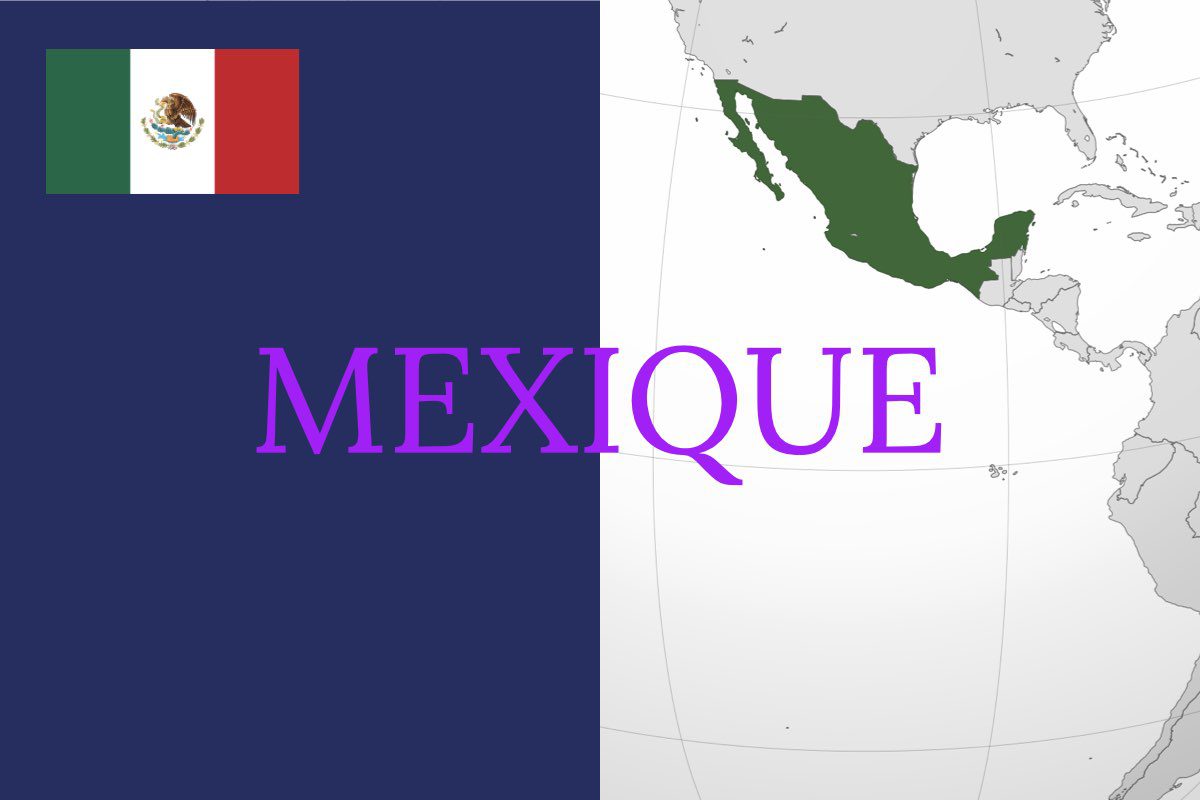Intercultural Management
Mexico — Understanding the expression “Mi casa es tu casa”

Many foreigners in Mexico often find themselves puzzled by common expressions such as: “I stopped by your place before coming,” “Your house is located in such-and-such neighborhood,” or “You have a big garden with lots of flowers at your place.”
Even though we are often warmly welcomed in France and frequently invited to “make ourselves at home,” in Mexico, the concept is taken even further in that politeness leads us to never mention “my home” or “my house” in our speech, and instead we systematically replace them with “tu casa” (your house).
Of course, it goes without saying that no one actually thinks about asking for the keys to the house that suddenly becomes ours. However, this type of conversation can shock some cultures more than others. This is what Erin Meyer calls contextual communication. For example, when we point out to someone that it is late, it implicitly suggests that it is time to go home.
In a high-context culture, communication is more filled with implications than in a low-context culture. People are used to listening or reading “between the lines.” This is what the Japanese call “listening to the air.” This can cause confusion when the speaker is not accustomed to this practice, while people used to this contextual communication may look for hidden messages where there are none.
When John F. Kennedy uttered the words “Ich bin ein Berliner” (I am a Berliner) during his famous speech in West Berlin during the Cold War to show solidarity with the people of Berlin, he did not think his speech would be interpreted differently; indeed, “Berliner” is also a chocolate doughnut in German.
Americans, in general, have very direct and explicit communication, as opposed to the Japanese and Koreans. The French and Spanish speakers are in between.
Cultural Factors
In addition to the different levels of context in various cultures, there are many cultural factors that can complicate communication and sow confusion.
This article highlights three essential steps to establish a fulfilling intercultural relationship. Next, we will explore the three fundamental pillars that allow building strong intercultural relationships by following these steps.
Trust
The first crucial step is to establish a trust relationship. Trust is the foundation of any relationship, and in an intercultural context, it is essential not to jump to hasty conclusions in the face of cultural misunderstandings, which can often be the cause of divergent perspectives and behaviors.
Trust itself is built differently depending on the culture. In some cultures, it is established through emotional experiences such as sharing a meal, participating in common events, or having interactions based on personal ties. Shared experiences, marked by a high level of emotion, are at the base of establishing mutual trust. That’s why some foreigners, whether French or American, may not understand the need for their Spanish or Latin American correspondents to take the time to have long lunches at the restaurant. What may seem like a waste of time to some is actually seen by others as a necessary investment to build trust.
In other cultures, like French culture, trust is cognitive and is built on the basis of concrete results. Some companies have grasped this difference and adapt their web pages according to the targeted audience. For example, a multinational promoting diversity, equity, and inclusion will offer different content in the United States and France. In the United States, you will find photos of events centered on these themes, moving testimonials from employees, as well as a simple message from a leader with his photo, highlighting the importance of this movement. However, in France, the same company will opt for a simple generic photo, followed by detailed text on the subject, accompanied by numerous graphs and data illustrating the results achieved. It is therefore essential to know how to adapt one’s message according to the people concerned.
Another key factor that can influence trust is punctuality. While the French may complain about the lack of punctuality of Mexicans, they are in turn perceived as unreliable by the Germans, Swiss, and English. This example highlights another observation concerning cultural factors: they are not valid absolutely but relatively, compared to the behaviors of other cultures.
Punctuality is closely linked to the perception of time. For some, time is a malleable entity, it is taken, lost, given, won… While others perceive it as a rigid and sequential flow.
Conflict Management
Conflict management is the second major step in managing intercultural relations and can be complex. Two factors that can exacerbate conflicts instead of resolving them are the influence of hierarchy and the different methods of individual evaluation.
The Impact of Hierarchy
Many foreigners are often caught off guard when they arrive in Mexico and discover the custom of responding “mande” or “mande usted” (give me an order) when they are called or they have not heard a message well. Until recently, parents used to correct their children by telling them: “You don’t say ‘what’, you say ‘mande’, so don’t be disrespectful.”
It is thought that this expression finds its origins in the colonial era, when the Spaniards established a caste system in which the lower castes (indigenous and mestizo) were forced to show their submission to the higher castes (whites and criollos) who ruled during the viceroyalty. Although this expression has become over time a form of politeness, a nuance compared to direct answers such as “what,” it remains a manifestation of a servile attitude that, fortunately, tends to disappear.
This attitude shows us first of all the impact of History on the current values of a culture. And in the case of Mexico, it shows us the importance that a person’s hierarchical position, their status, can have on behaviors.
Hierarchy is also very important in Asian cultures such as Japanese or Korean. Malcolm Gladwell in his book “Outliers” highlights the importance of hierarchy in the Korean language which uses honorific terms to address individuals according to their social status. This cultural heritage has been blamed in the terrible plane crashes of the Korean company, where it contributed to communication problems and a reluctance to challenge authority in the cockpit.
In a culture where the leadership style is highly hierarchical, it is expected that the leader will adopt an authoritarian approach that guides his subordinates. Conversely, in egalitarian cultures like those of the Nordic countries, the manager’s role is that of a facilitator among equals. Hierarchical gaps are reduced and it is not uncommon to see communication bypass established levels of hierarchy.
It is easy to understand the conflicts that can arise when an approach that is too egalitarian is applied in a hierarchical culture, or vice versa. For example, bypassing hierarchical levels to give or receive instructions can deeply offend a manager from a hierarchical culture. As a result, his subordinates may hesitate to follow instructions received directly for fear of offending their superior and suffering the consequences.
Assessment of People
These management styles, whether egalitarian or hierarchical, have an impact on how to provide an assessment to a team member. In a hierarchical culture, the status of the person plays a primary role in building their identity. Thus, any action that could question this status is perceived as an attack on their personal value. While direct, clear, and public criticism poses no problem within an egalitarian culture, it can cause shame and make the person feel devalued in hierarchical cultures. A person thus confronted will be convinced that they are about to be fired, which could lead them to take the lead and resign. It is therefore crucial to be cautious when communicating feedback in such cases, adopting a subtle, courteous approach, and above all, in private and confidentially.
The Three Pillars of Intercultural Relations
We present in this article an innovative method based on three fundamental pillars to build fulfilling intercultural relationships, based on trust and non-conflictual. By recognizing and integrating these key elements into intercultural interactions, it is possible to foster mutual understanding, effective communication, and fruitful collaboration.
Open-mindedness
The first pillar of this method is to develop an attitude of openness and curiosity towards people from other cultures. This involves adopting a benevolent perspective and being genuinely interested in different values, beliefs, and cultural practices. By cultivating this open-mindedness, we are more able to recognize and respect cultural differences, which promotes a climate of trust and mutual respect. By demonstrating active listening, we can truly understand the perspectives and needs of other people, avoid misunderstandings, and create strong bonds based on empathy and authentic communication.
Self-Awareness
The second pillar is based on an awareness of our needs, our own values, biases, and beliefs, and thus allow us a better understanding of other cultures. It is by discovering our own prejudices that we can avoid projecting our cultural norms onto others, thus promoting inclusive intercultural communication. By understanding our own cultural influences, we are better prepared to navigate intercultural interactions without jumping to hasty judgments and promoting a true mutual understanding.
Alliance
Finally, the third pillar of this method relies on the establishment of an alliance, which consists of agreeing on common rules for all members of the group. This defines a culture specific to the relationship in the team. The alliance is a mutual commitment between the participants, putting in place practices that allow open, clear, and harmonious communication while respecting and valuing cultural differences and in harmony with common goals. This includes creating a secure space where everyone feels free to express their ideas, concerns, and needs, without fear of judgment or discrimination, as well as the establishment of mechanisms allowing the effective resolution of conflicts. Indeed, it is not a question of avoiding conflicts, on the contrary, it is essential to bring them to light and resolve them.
For example, if we take the case of punctuality, the alliance will have to include a common rule concerning the “acceptable” delay for a meeting within the team: 5 minutes, for example. Thus, even if some people will continue to arrive early, they will no longer be offended by a few minutes delay from other members.
By integrating these three pillars – open-mindedness, self-awareness, and the establishment of a relational alliance – into our intercultural interactions, we are able to build trust and non-conflictual relationships with people from different cultures. This method offers a comprehensive and proactive approach to navigating cultural diversity and taking advantage of the opportunities it presents.





